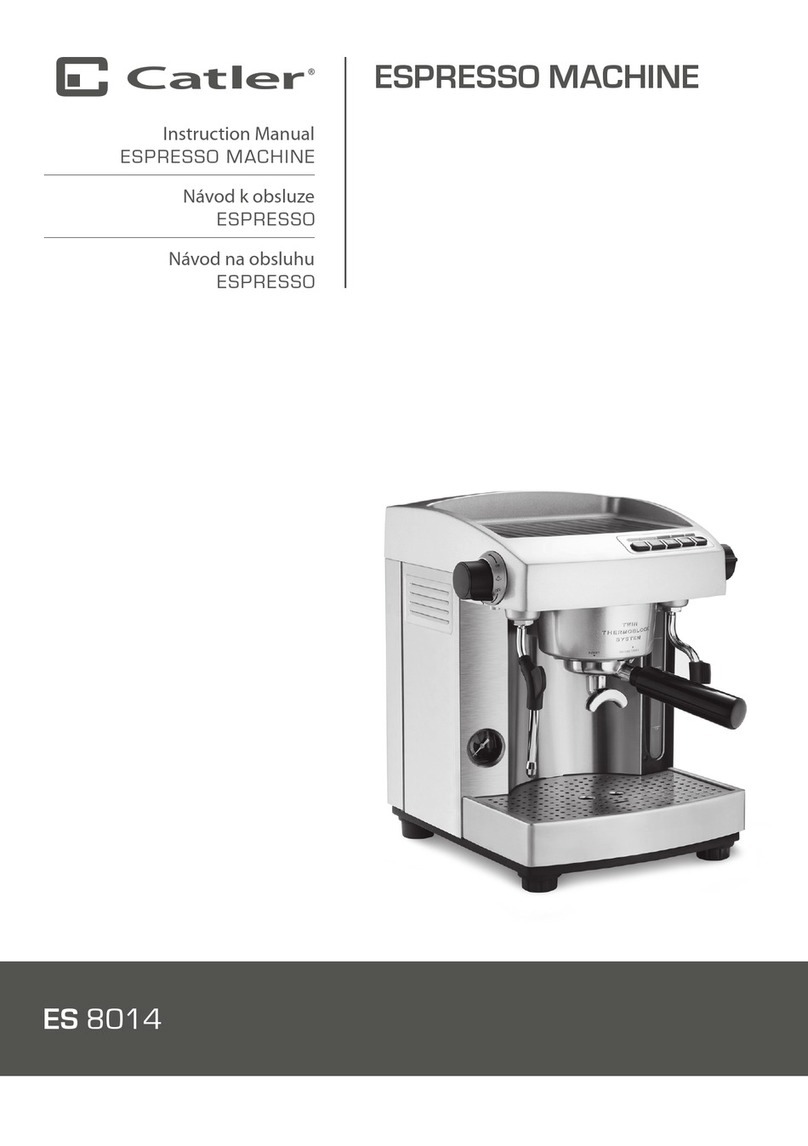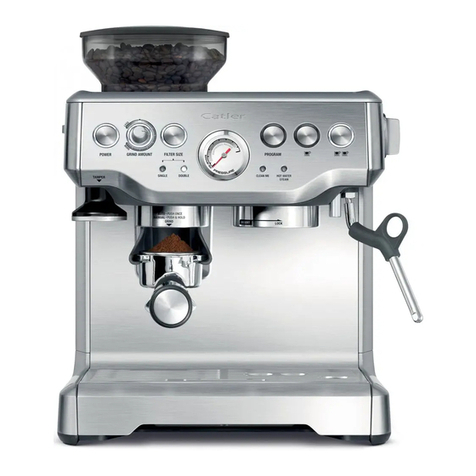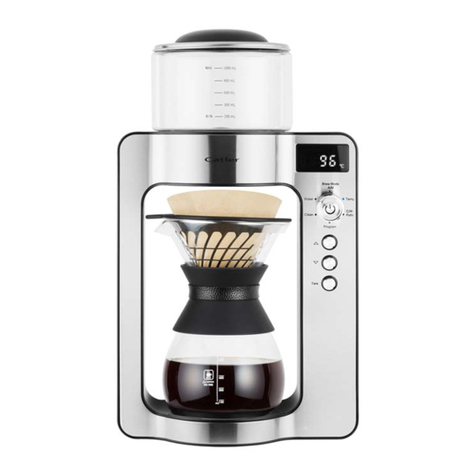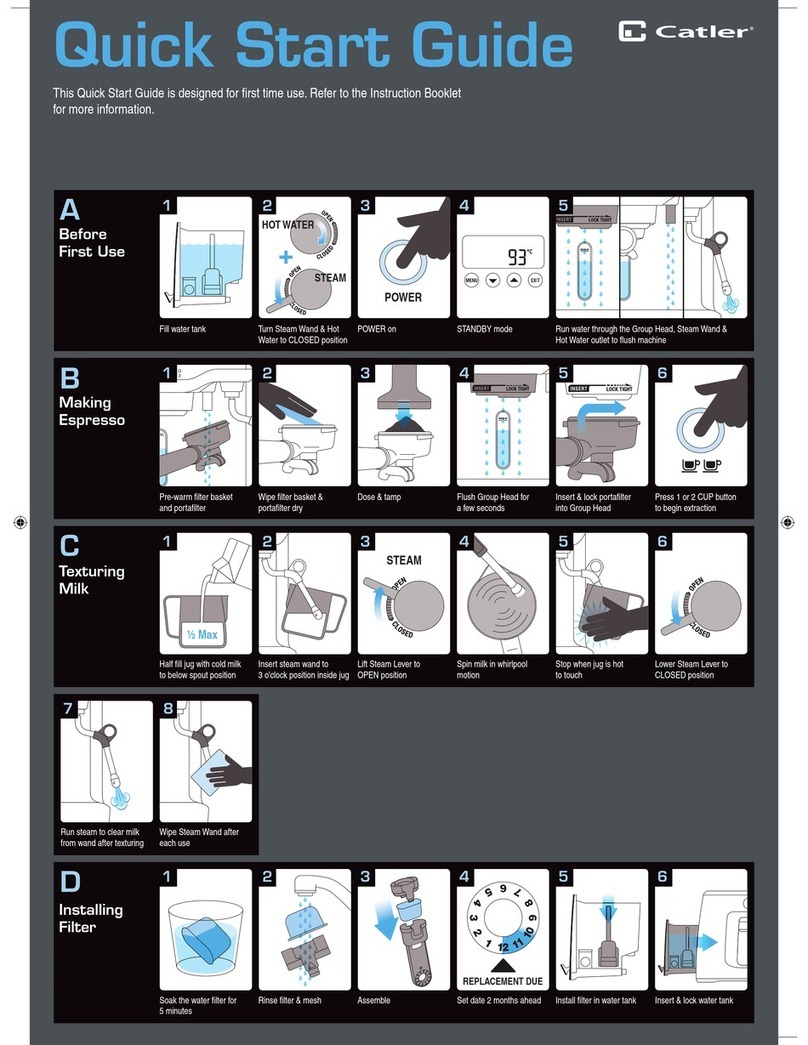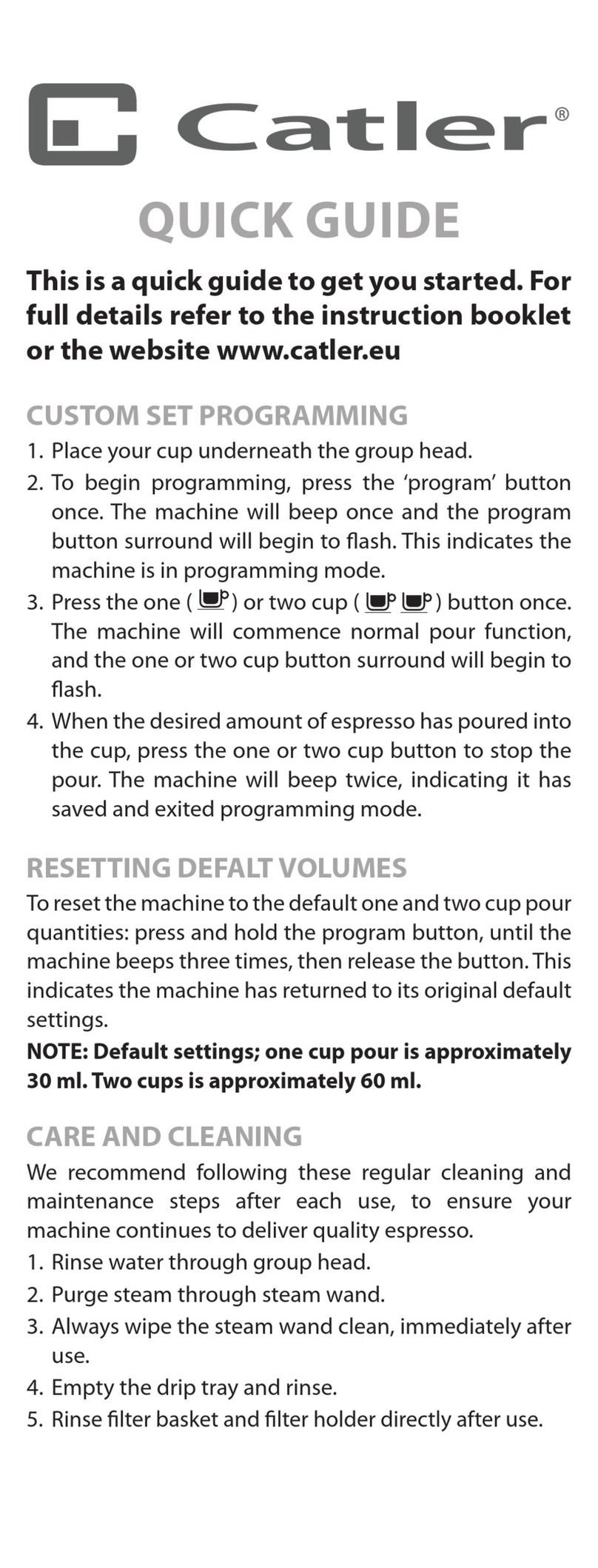
4
CATLER RECOMMENDS SAFETY FIRST
CATLER RECOMMENDS SAFETY FIRST
We at Catler are very safety conscious. We design and manufacture consumer products with
the safety of you, our valued customer, foremost in mind. In addition, we ask that you exercise
a degree of care when using any electrical appliance and adhere to the following precautions.
IMPORTANT SAFEGUARDS FOR YOUR ESPRESSO MACHINE ES 4011
Carefully read all instructions before
operating and save for future reference.
Remove any packaging material and
promotional labels or stickers before using
the espresso machine for the rst time.
Do not place the espresso machine near
the edge of a bench or table during
operation. Ensure the surface is level, clean
and free of water and other substances.
Do not place the espresso machine on or
near a hot gas or electric burner, or where
it could touch a heated oven.
Do not use the espresso machine on
a metal surface, e.g. sink drain board.
Always ensure the espresso machine is
properly assembled before connecting to
power outlet and operating.
Warning: The espresso machine is not
intended to be operated by means of an
external timer or separate remote control
system.
Use only the accessories provided with the
espresso machine.
Use only cold tap water in the water tank.
Do not use any other liquid.
Never use the espresso machine without
water in the water tank.
Ensure the lter holder is rmly inserted
and secured into the brewing head before
using the machine.
Never remove the lter holder during the
brewing operation as the machine is under
pressure.
Do not leave the espresso machine
unattended when in use.
Do not touch hot surfaces. Allow the
espresso machine to cool down before
moving or cleaning any parts.
Do not place anything, other than cups for
warming, on top of the espresso machine.
Always switch o the espresso machine
by pressing the POWER button ‘O’, switch
o at the power outlet and unplug if
appliance is to be left unattended, if not
in use, before cleaning, before attempting
to move the appliance, disassembling,
assembling and when storing the
appliance.
Keep the espresso machine and
accessories clean. Follow the cleaning
instructions provided in this book.


